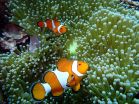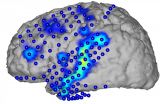A better way to evaluate conservation policies found by Georgia State researchers
2015-06-16
(Press-News.org) Protected forested areas in Brazil, Costa Rica, Indonesia and Thailand have prevented the release of more than 1,000 million additional tons of carbon dioxide into the atmosphere, an economic service provided by nature worth at least $5 billion, according to new research by Georgia State University economist Paul Ferraro with alumnus Merlin M. Hanauer and colleagues.
In an article published this week by the Proceedings of the National Academy of Sciences, the authors use this finding to show how conservation research methodology is improved by joining its two distinct and largely independent branches: research that models and maps ecosystem services and research that empirically measures how human behaviors are affected by actual conservation programs.
Their goal is to improve conservation planning by studying the impacts of public policies on the supply of other valuable ecosystem services that benefit humans - like pollination, water quality and quantity, and biodiversity. Hard evidence about policy impacts helps aid conservation planners in obtaining the greatest return on scarce public funds.
"Nature provides all these free ecosystem services, but we don't have a good picture of how useful our policies are at protecting the supply of these services," said Ferraro, a professor in Georgia State's Andrew Young School of Policy Studies. "Scientists need to move beyond hypothetical scenarios and conduct impact evaluations of real-world policies aimed at delivering these services. So we brought together the scientific modelers with social scientists who empirically evaluate policies in place now."
When a law's potential impacts are modeled only on a computer, the human behavior in these models is simplistic, he explained.
"Without an evidence base for the impacts of real policies," he said, "the insights from modeling and valuation are not as useful to decision makers as they could be. But when we measure how such policies change human behavior, we have a better idea of their impact on environmental services. It is why, for example, we have human drug trials; a computer model can't do it.
"In our field, we don't have computer models of humans and nature that are good enough to predict what would happen with a proposed conservation policy or program. By estimating the impacts of the policies and programs in effect now we can more realistically measure the future impact of new policies and programs."
Decision makers and ecosystem scientists want a strong evidence base from which to guide their conservation actions, the authors noted.
"With stronger evidence and theories about how conservation programs affect natural and human systems, scientists, policymakers and practitioners can determine how to best design policies for enhancing human welfare, while conserving species and habitats," Ferraro said.
INFORMATION:
ELSE PRESS RELEASES FROM THIS DATE:
2015-06-16
A study conducted by the Zoological Society of London (ZSL) has revealed the importance of single males in small, threatened populations. Results from a study of endangered New Zealand hihi birds (Notiomystis cincta), published this week in Evolutionary Applications, showed that bachelor males who don't hold breeding territories, known as 'floaters', could help maintain genetic diversity and decrease the likelihood of inbreeding by sneakily fathering chicks.
These underestimated individuals are vital to the long-term survival of small populations, such as in the hihi, ...
2015-06-16
Researchers of the Max Delbrück Center for Molecular Medicine (MDC) in the Helmholtz Association, in collaboration with the National Heart Research Institute Singapore (NHRIS), have gained new insights into the regulation of disease-associated genes. They used a new technique that enables them to observe gene regulation at the level of protein production. They could thus capture more individual gene regulations than with traditional methods that only capture gene expression and transcription (Nature Communications, doi: 10.1038/ncomms8200)*.
When a gene is read, ...
2015-06-16
Researchers from North Carolina State University have created stretchable, transparent conductors that work because of the structures' "nano-accordion" design. The conductors could be used in a wide variety of applications, such as flexible electronics, stretchable displays or wearable sensors.
"There are no conductive, transparent and stretchable materials in nature, so we had to create one," says Abhijeet Bagal, a Ph.D. student in mechanical and aerospace engineering at NC State and lead author of a paper describing the work.
"Our technique uses geometry to stretch ...
2015-06-16
Researchers from the ARC Centre of Excellence for Coral Reef Studies at James Cook University have discovered that suspended sediment damages fish gills and can increase the rate of disease in fish.
"Suspended sediments result from flood plumes, coastal agricultural and industrial development and from dredging operations and are increasing in coastal waters worldwide," says study co-author, Dr Amelia Wenger.
"Fish gills are in direct contact with their environment and are the first line of defence in the animal's immune response, which makes them the perfect place ...
2015-06-16
University of Tokyo researchers have discovered the structure and transport properties of the "intermediate state" in lithium-ion batteries - key to understanding the mechanisms of charge and discharge in rechargeable batteries. These findings may help accelerate battery reaction speed and significantly shorten battery charging time.
Although there is strong demand to minimize battery-charging time, the mechanisms of battery charge and discharge reactions have yet to be fully understood. While the existence of an "intermediate state" that accelerates battery charge and ...
2015-06-16
Researchers have discovered that extreme exercise can cause intestinal bacteria to leak into the bloodstream, leading to blood poisoning.
Experts at Monash University monitored people participating in a range of extreme endurance events, including 24-hour ultra-marathons and multi-stage ultra-marathons, run on consecutive days.
"Blood samples taken before and after the events, compared with a control group, proved that exercise over a prolonged period of time causes the gut wall to change, allowing the naturally present bacteria, known as endotoxins, in the gut to ...
2015-06-16
A promising type of vaccine designed to eradicate malaria by blocking parasite transmission could be a step closer, as a result of experts uncovering new information about the targeted protein.
The international team of researchers co-led by Dr Natalie Borg from the Department of Biochemistry and Molecular Biology at Monash University, and Dr Rhoel Dinglasan from the Malaria Research Institute at the Johns Hopkins Bloomberg School of Public Health in Baltimore, USA, focused on a protein in the Anopheles mosquito midgut called AnAPN1.
The research, published in the journal ...
2015-06-16
Restricting teenagers from driving unsupervised at night, and introducing strict penalties and other licensing requirements, could reduce crashes significantly, according to research.
Published in Health Affairs, the study by researchers from Monash University and Harvard Medical School, shows that driving laws that eliminate or deter unsupervised night driving by people younger than 18 achieve substantial reductions in car crashes.
Car crashes are the leading cause of death among people aged 15-19 worldwide. In the US, where the study was based, teen drivers experience ...
2015-06-16
This news release is available in German.
Speech is produced in the human cerebral cortex. Brain waves associated with speech processes can be directly recorded with electrodes located on the surface of the cortex. It has now been shown for the first time that is possible to reconstruct basic units, words, and complete sentences of continuous speech from these brain waves and to generate the corresponding text. Researchers at KIT and Wadsworth Center, USA present their "Brain-to-Text" system in the scientific journal Frontiers in Neuroscience (doi: 10.3389/fnins.2015.00217). ...
2015-06-16
For breast cancer to be fatal, the tumor has to send out metastases to other parts of the body. The cancer cells are spread via the blood vessels, and a research team at Lund University in Sweden has now proven that the protein ALK1 determines the extent of the tumor's spread in the body. The higher the levels of the protein on the surface of the blood vessels, the greater their permeability to tumor cells and therefore the greater the risk of metastases.
The new study also shows that the drug Dalantercept can prevent the spread of tumour cells in breast cancer by blocking ...
LAST 30 PRESS RELEASES:
[Press-News.org] A better way to evaluate conservation policies found by Georgia State researchers



